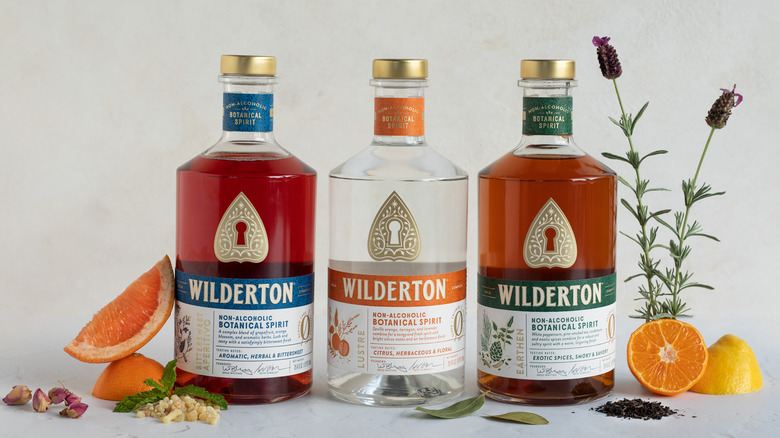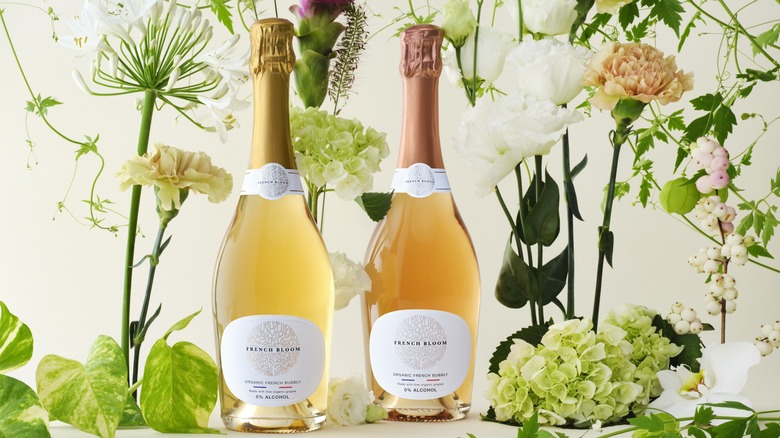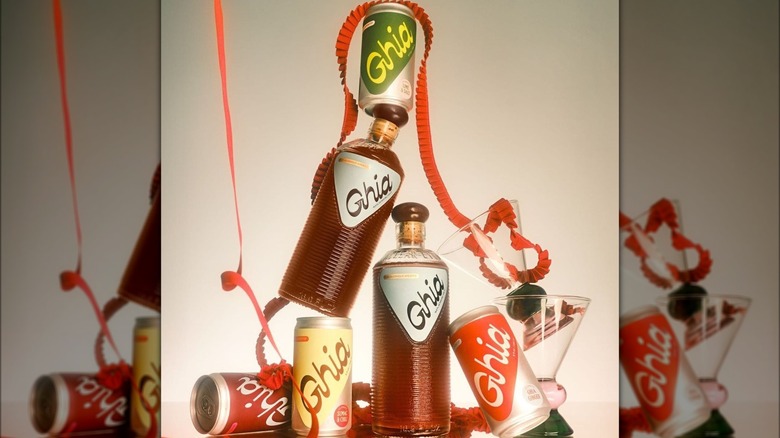Alcohol-Free And Non-Alcoholic Don't Mean The Same Thing For Drinks
From non-alcoholic cocktails and zero-proof apéritifs to booze-free beer and 0.0% ABV wine, these days, everyone is looking for a refreshing happy hour drink that doesn't come with a built-in hangover. But with the many, many options available out there for satisfying drinks without alcohol, it can be helpful to understand the lingo used to differentiate these.
While expressions like "alcohol-free" and "non-alcoholic" might sound like synonyms, these common descriptors actually don't mean the same thing. While alcohol-free truly means that there is not a trace of alcohol to be found in your drink, non-alcoholic beverages can contain up to 0.5 percent alcohol. This is generally considered to be too low of an ABV to get anyone tipsy, and the range and its accompanying terminology are more of a legal matter than anything else. But if you are truly determined to not consume even the smallest amount of booze you should check the labels on your drinks, though it may be present in a lot of places you wouldn't expect.
Accidental alcohol
Many foods and beverages contain small amounts of alcohol, usually as a byproduct of the fermentation process; certain types of bread, soy sauce, kimchi, and sauerkraut, for example, are all made using fermentation and can be slightly alcoholic. Fruit juices and even some fruits themselves can also ferment as they ripen, producing alcohol. Anyone who has accidentally left a gallon of apple cider or grape juice in the fridge for too long will know the unsettling feeling of taking a swig, only to find out the juice has turned.
There is also a small amount of alcohol in kombucha and other fermented probiotic drinks. But to be sold commercially, it is often put through a dealcoholization process (like the "spinning cone" technique) to meet government standards for "non-alcoholic" labeling. However, like fruit juice, kombucha can also continue to ferment on shelves, so it can't claim to be completely free of alcohol.
Check the label for 0.0
Many non-alcoholic beverages are made by producing a wine or beer, and then putting it through a dealcoholization process. This can result in a product with a negligible ABV, or one that is truly alcohol-free, depending on the product and the process. In the U.S., alcohol-free products are often marked with the word "zero" in the name, referring to the product's zero percent ABV, or they may use "0.0%" or "0.0 ABV" as indicators. Wine or other alcoholic products that have been dealcoholized may also be referred to as "alcohol-removed" products.
Non-alcoholic or alcohol-free beverages that contain large amounts of fruit juice could also be subject to the same incidental fermentation as normal juices, but this does not typically affect how they are labeled. Keep in mind that the labeling for non-alcoholic and alcohol-free drinks varies from country to country. What is used in the U.S. differs from what is used in the U.K. and elsewhere, but a 0.0 indication is generally unambiguous worldwide.



